To some, the LC-A 120 might just seem to be an overpriced lump of plastic designed to exploit more dollars for Hipsters. But the LC-A 120 is without doubt one if not the most important camera launched in the last decade. And I’d argue it’s one of the best new cameras despite a few flaws.
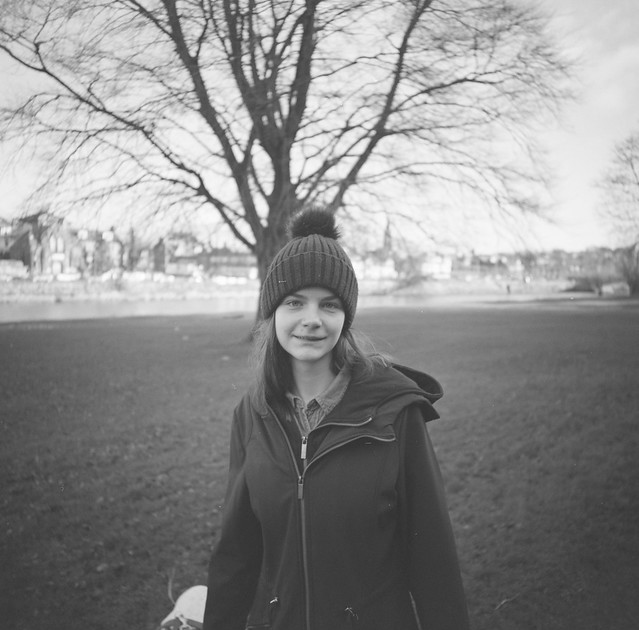
This is a slightly different review. Most cameras that feature here get a 2 or 3 rolls chucked into them before a review is done. Some come back for a follow up. But this is the first camera that I’ve been shooting for almost 2 years on a semi-regular basis. This maybe gives more of a balance in some ways.
So what is a LC-A 120 ?
The tl:dr answer is a LC-A+ that can shoot 120 roll film. But that’s cutting corners.
Launched in 2014 this is the newest LC-A model made by Lomography AG. This spiritually links it to the original ЛОМО (Lomo) LC-A which launched in 1983. The LC-A was designed to be the Soviet Union’s answer to the new wave of ultra compact 35mm from Japan. It bears an uncanny resemblance to the Cosina CX1 & CX2. Like its inspiration was a zone focus automatic exposure compact.
The LC-A sold well enough domestically that it lasted beyond the fall of the soviet Union. But mounting completion from more modern compacts mean it stopped production in 1994.
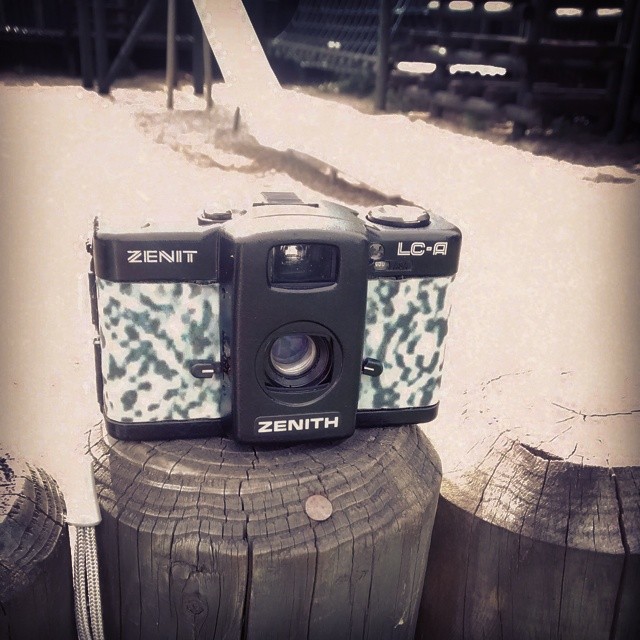
And it would have remained a footnote of interest to FSU camera collectors. But that all changed when some Austrian students visited Prague in 1991…..
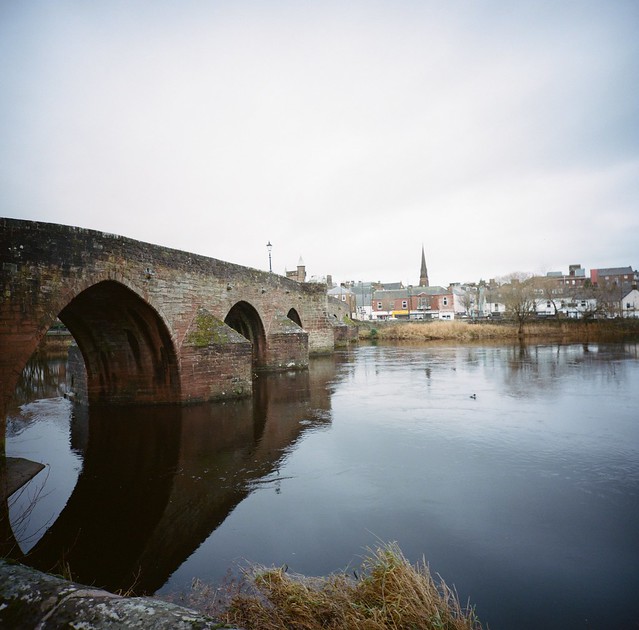
Hipsters, Lomography & Putin Oh My !!
This depends on your level of cynicism. Either those students discovered the joy of these quirky beasts and triggered the birth of the Lomography movement. This is hailed by some as one reason film survives.
Otherwise these students were pretty savvy. Used the lo-fi movement to set up their global brand and sell the LC-A, plastic crap cameras and rebranded film at inflated prices to hipsters.
As ever the truth sits somewhere in between.
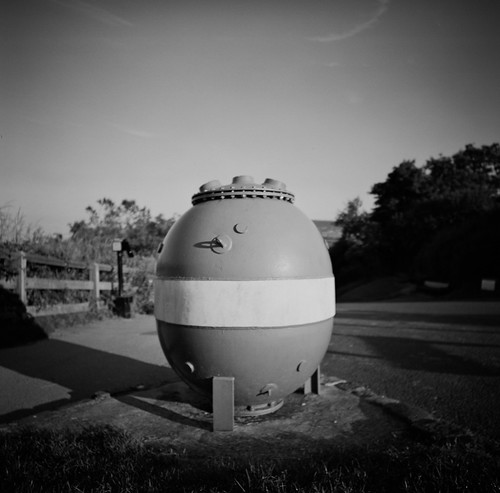
Lomography AG did convince ЛОМО to keep making the LC-A. Weirdly they got some support from a certain Vladimir Putin, who was Deputy Mayor of St Petersburg. LC-A production restatrted and ran until 2005 at ЛОМО. This gives the LC-A one of the longest production runs in the world.
But the story didn’t end there. Although ЛОМО stopped making the cameras, the team for a time continued to refurb them and make lenses. Those lenses were used in the LC-A+ a chinese made, revised version. Lens production would gradually switch although even a few yeasr back you could buy a Russian lensed LC-A+
In 2011 this would be joined by the wide angled version the LC-A Wide. And then in 2014 the LC-A 120.
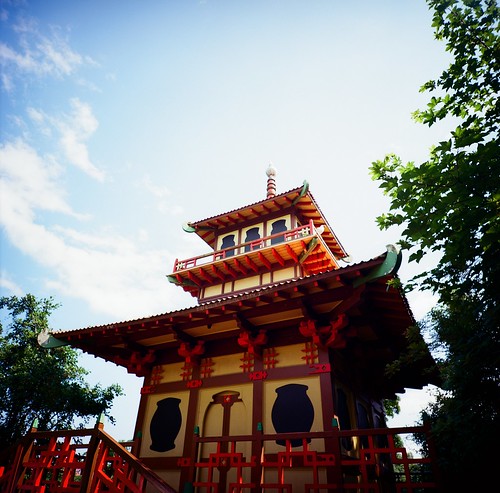
Lomography they make lo-fi camera though ?
On one level you’re right. Lomography AG were there very much before the likes of the Dubblefilm Show Clones or the Reto UWS showed up. But alongside their lo-fi plastic legions, they do make the LC-A series and a few other “premium” models.
Admittedly Lomography’s definition of premium might not equate to a Titan edition Leica. But whilst still plastic these tend to be better made.
And they’re important as they are the only folk whom are successfully making automatic exposure roll film compacts. Or not so compact in the LC-A 120’s case.
I’ll let that sink in.
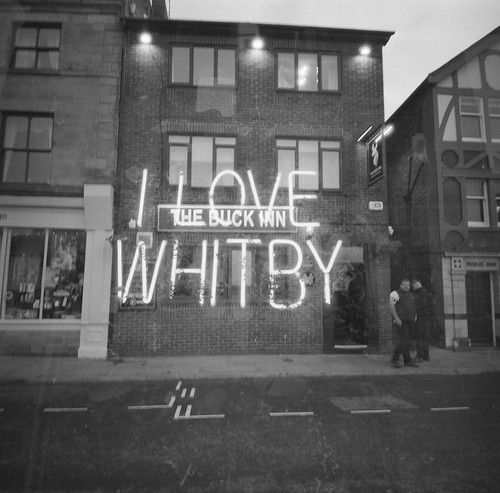
Excluding the world of instant analogue no one else is making cameras like these. That may change if the Alfie Tych gets into production. And of course if you have a few thousand spare you can by a Leica rangefinder. But right now they are are the only folk doing what they do.
Even buying a decent 120 film camera is hard. I hear a lot of folks say you could buy a Fujifilm G model – but can you today for this money ?
So is this just a big LC-A ?
Yes and no
This is a brilliant hommage to its smaller predecessors. The attention to styling detail is great. The top plate looks like my original ЛОМО LC-A bar the introduction of a MX switch and cable point.
It has the same dial on the front for the ISO setting. Although thankfully it’s bigger so I can easily read it.
It like the LC-A+ is mainly plastic bodied. That plastic is better than a Diana F+. It feels about the same as the recent Kodak Ektar H35 or a 1990’s branded P&S. I have the 25th anniversary edition. This has red leather cover but there is still a lot of plastic and you can’t buy this version now. The Nons SL660 proves you can have part metal body for this money. It’s noticeable when you handle an old Russian made lC-A too
The lens is opened by sliding the cover down unlike the other models. Oddly that makes it more like the Hong Kong Lomo – the Halina Miro 35 which has a similar sliding mechanism.
So what’s the LC-A 120’s spec ?
The Minigon XL lens is 38mm which is pretty ultra wide for a 120 camera. That’s equivalent to 21mm on a 35mm camera. Offering a 92° angle of view., it is a 5 element in 4 groups construction. It uses zone focus (4 zones) like the original LC-A. And it’s a coated lens like its smaller cousin.

The programmed shutter can do speeds from infinite to 1/500 and the shutter goes from f/4.5 to f/16. You don’t get nice exposure tables no more. So sadly we don’t know if the camera drops shutter speed first to maximise DoF. Or if the aperture and shutter speeds sits partly tied.
Power is by 3XSR44/LR44 which are widely obtainable and cheap. I’d recommend stick to SR44 as better voltage consistency and less likely to leak.
The camera shoots the classic so called 6×6 (actually nearer 5.6×5.6cm) frame size. There is a tripod point and cable release (the camera comes with a cable alongside the default nice hardback book that comes with all Lomo cameras).
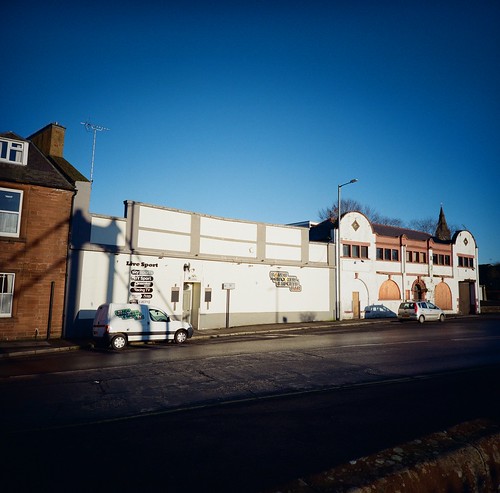
The only user control bar shutter is the 4 zone focus points 0.6m, 1m, 2.5m and infinity (∞). The manual lists their DoF @ f/4.5 (CoC 0.045mm) as 0.5-0.7m, 1-1.5m, 1.6-3m & 4m-∞ respectively.
The more astute of you will note this doesn’t added up if the focus markers are accurate for the focal points. Plug in the lens spec into DoF calculators like DoF master and you get figures more like 0.56-6.5m, 0.88-1.16m, 1.86-3.95m and 7.15m- infinity. It may be the 3 longer distances are actually closer- for example if the infinity setting is actually 9m then 4m-infinity is possible (that’s not uncommon to do)
What ever the actual focal points there are gaps even with Lomography’s figures.
But obviously the DoF will be bigger at smaller apertures.
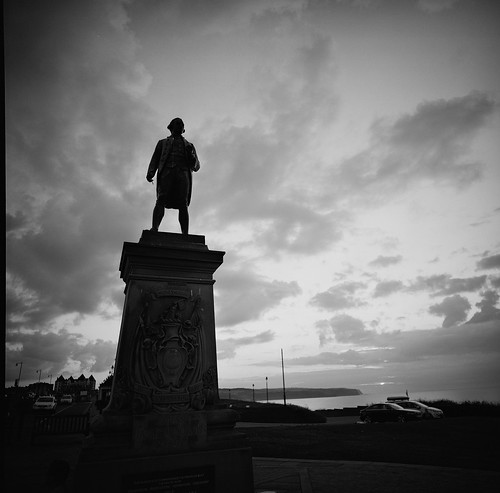
In use
Broadly the camera loads as expected but it isn’t the easiest. In principle you move a switches on the rear of the case where the lower film and take up spool holders are causing them to pop down allowing for easy loading but it is still a bit of a struggle. Once you’ve clipped both film and take up spool in place you load as normal. The camera has an automated winding system so you need to wind on until the start line on your film aligns with a n arrow over the middle of the film gate. You then shut the back and wind on until you get to shot 1 and the winder locks.
You’re best tensing the roll whilst doing this to reducing slipping later.
I find the strap often get in the way when trying to close the door. The lugs are too close IMHO.

When ready to shoot slide down the lens front. Half pressing the shutter will bring on the battery check red LED in viewfinder. If second LED lights up the camera is warning you the shutter speed is going to be slow but that cut of is not described in the manual.
Then just press the shutter down. this has quite a bit of travel but feels re-assuring. Be aware in low light conditions the shutter will eith close on a long exposure at the right time the metering thinks or sooner if you lift you finger up so keep it down until you here the second ping of the shutter. Half depressing the shutter should lock the exposure on the old model but wiith LC-A 120 you need to get very close to shutter opening to do this.
Worth noting on long exposures just like the original lifting your finger off will cause the shutter to close even if not full exposed. That’s helpful with flash shots as we’ll see.
The settings encourage you to get close but this is capable of longer shots. MX switch is handy but not my cup of tea. It thankfully is secure so I’ve only shot it accidentally a few times.
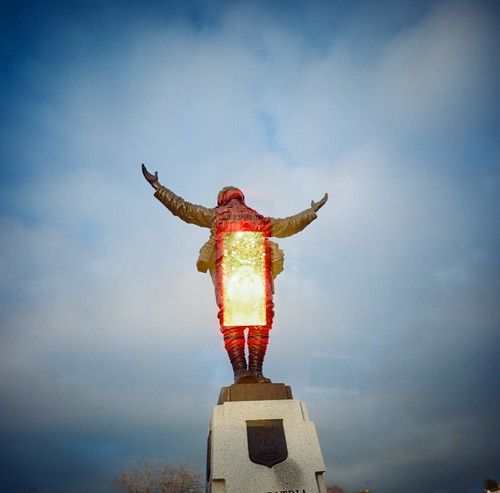
The exception is with Flash
Like all other Lomography AG LC-A+ series cameras including the LC-A 120 only offer Rear Curtain sync. No option to switch nor control your aperture. I like the option my dSLR or my my more high end SLR like the F80 have a rear curtain sync. I just don’t use it very often.
I’d rather have the norm (aka front curtain sync) with the LC-A 120 where the flash fires as son as the shutter opens. But nope your shutter will open and the flash only fires just when it closes. Yes I know this provides creative options as described here and here. But there’s a reason every other camera uses front curtain sync as default (bar the old bulb cameras).
But with the LC-A120 could they just not have made it front curtain sync. Shoot in low light and the aperture widens creating one issue and the shutter is slow. That might be a problem if there is any ambient light as youy judder around making ghosting before the flash fires. You can’t even get the camera to compensate for th flash unit (Lomography recommend you set you flash if it allows you to do so to f/4.5). You’ll end up with the shutter open for second and then complete over expose the shot when your flash goes off. You can shorten shutter time by taking your finger off the shutter.
Results
The lens is actually pretty good although it does have it’s limitations.
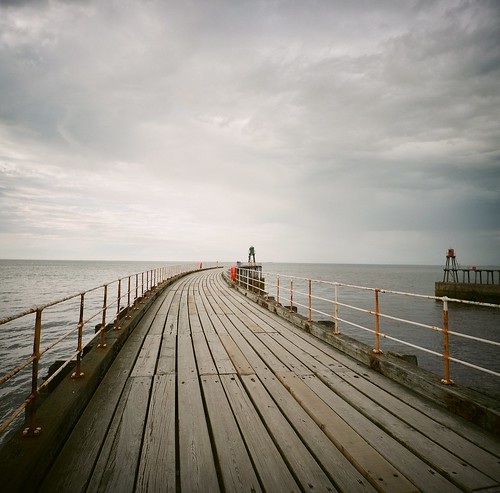
I’d recommend 400 ISO film and daylight shooting. Zone focusing may take a jump and sadly there is no in camera confirmation
in the these condition with the lens stopped down things are pretty crisp centrally out to the edges. There is some fall off in the corners but really compared to an average SLR lens this isn’t bad.
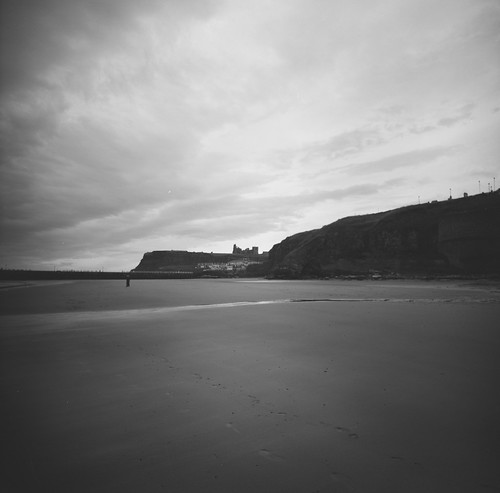
There’s not much in the way of chromatic aberration. I think there is just a whiff of pincushion distortion but this is almost invisible.
There just a smidge of vignetting. It’s there but not a lot as I’d expected more.
In duller conditions with 100 ISO the images are softer. This likely due to a combination of the lens being weaker wide (a common issue with even expensive primes), reduced depth of field (there are big gaps) and potentially shake.
I’d say the former is the issue. The corners are notably softer and I think this enhances that vignette. But in bright light with aperture narrower 100 ISO shots look crisper.
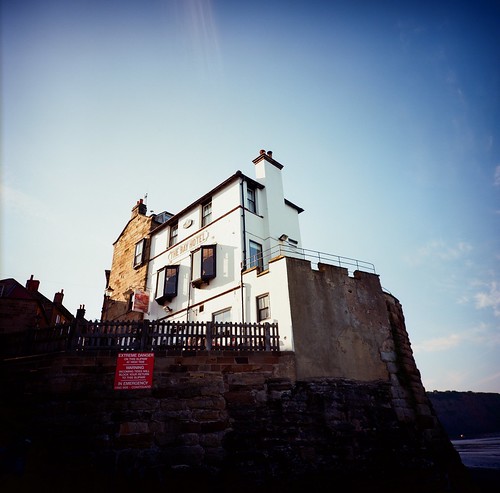
Robin Hood’s Bay 2021. LC-A 120 with Ektar 100. Processed and scanned by AG Photolab. Click on image for full size on Flickr.
I can’t fault the metering. It is not bad for what it is
Winding still proves an issue ebven with some experience. I now treat shot 12 as the “Angel’s share”. Sometimes you get it back but more often not.
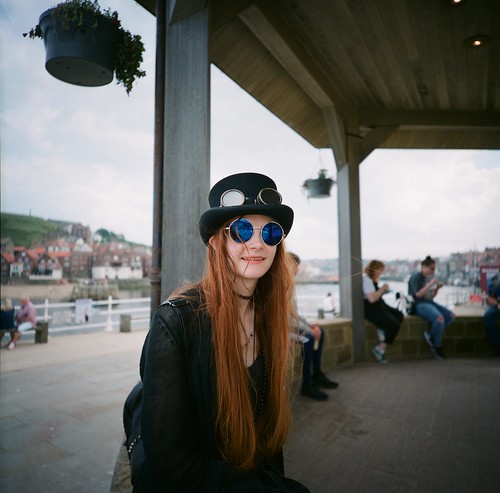
Conclusions
This is a modern classic. It has its flaws but simply there is nothing like it you can buy new today. With good light and medium speed film it’s peachy sharp,
What’s Good
- The lens is actually very good at most apertures
- Metering is pretty good
- Retro looks
- Simple to use
- Portable
What’s Not so Good
- Build quality not quite premium
- Lens wide not as good
- Loading not pleasant
- Rear Curtain Sync only
- Lack of in viewfinder focus info
- No option to change film mas
- Winding issues
The closest thing to it on the market are it’s 35mm siblings or Instant cameras. But the latter actually take lower resolution shots and neither Instax or Polaroid films have the flexibility of 120. Few current instant cameras can match the image quality even with the limitations the exceptions perhaps being the SLR (Nons/eEfurbed Polaroid SLRs) and MiNT’s Rangefinders
It isn’t going to be for all. Zone focus can be a jump but this is worthy despite it faults. And is the most exciting roll film camera released in the last decade whether you like it or not.
Alternatives
There are no current Zone focus 120 alternatives. The closest camera I can think of in production is Fujifilm Instax SQ6 but that’s actually pseudo zone focus (but actually gives more lomo images than this Lomo). Lomography’s Diana F+ should also get a mention. Much cheaper but if upgraded to the Glass lens can start. Equally the Holga 120N or more likely the 120G need to be mentioned
On the second hand market things may get a little more interesting. Fujifilm’s various G models shooting 645 frames in similar sized body with AF, RF and occasional zone focus. But these are no longer cheap to buy and similar models from Mamiya et al are equally if not more more expensive.
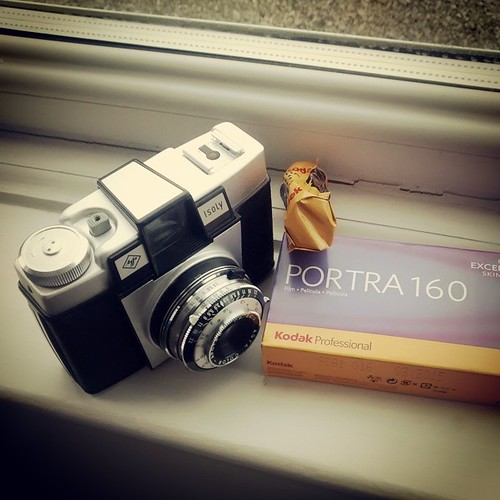
Without disappearing down the Rabbit hole of medium format SLR there a few other cameras you may wish to check out. The Agfa Isoly III takes a simple camera and sticks on a decent lens and shutter combo. No metering but..
W,B. Haking’s cameras are no stranger to lomo lists and here I’d recommend the Halina 6-4. Nice vintage styled zone focus shooter with the option to switch between 6×6 & 4×4 mask. The lens is better than you would be think but you are stuck with a choice of 1/50 or B for shutter and there is no metering.
Other Sources
Lomography’s LC-A 120 microsite is a good intro for info and example shots. Kosmofoto has a nice brief review with lots of pics. There are also reviews on Emulsive, FSC and LomoKev‘s site.

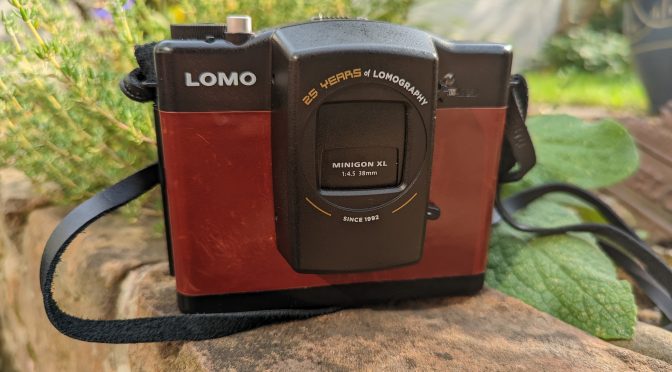

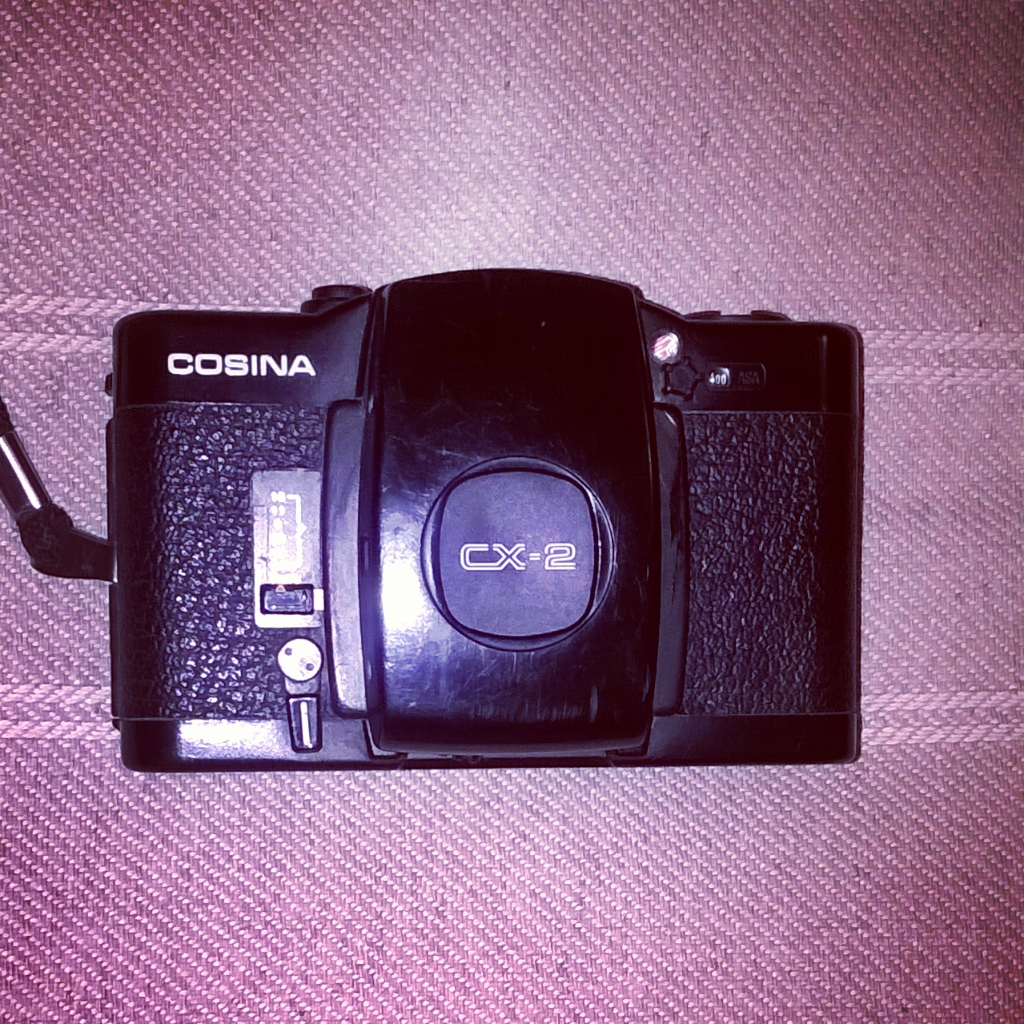
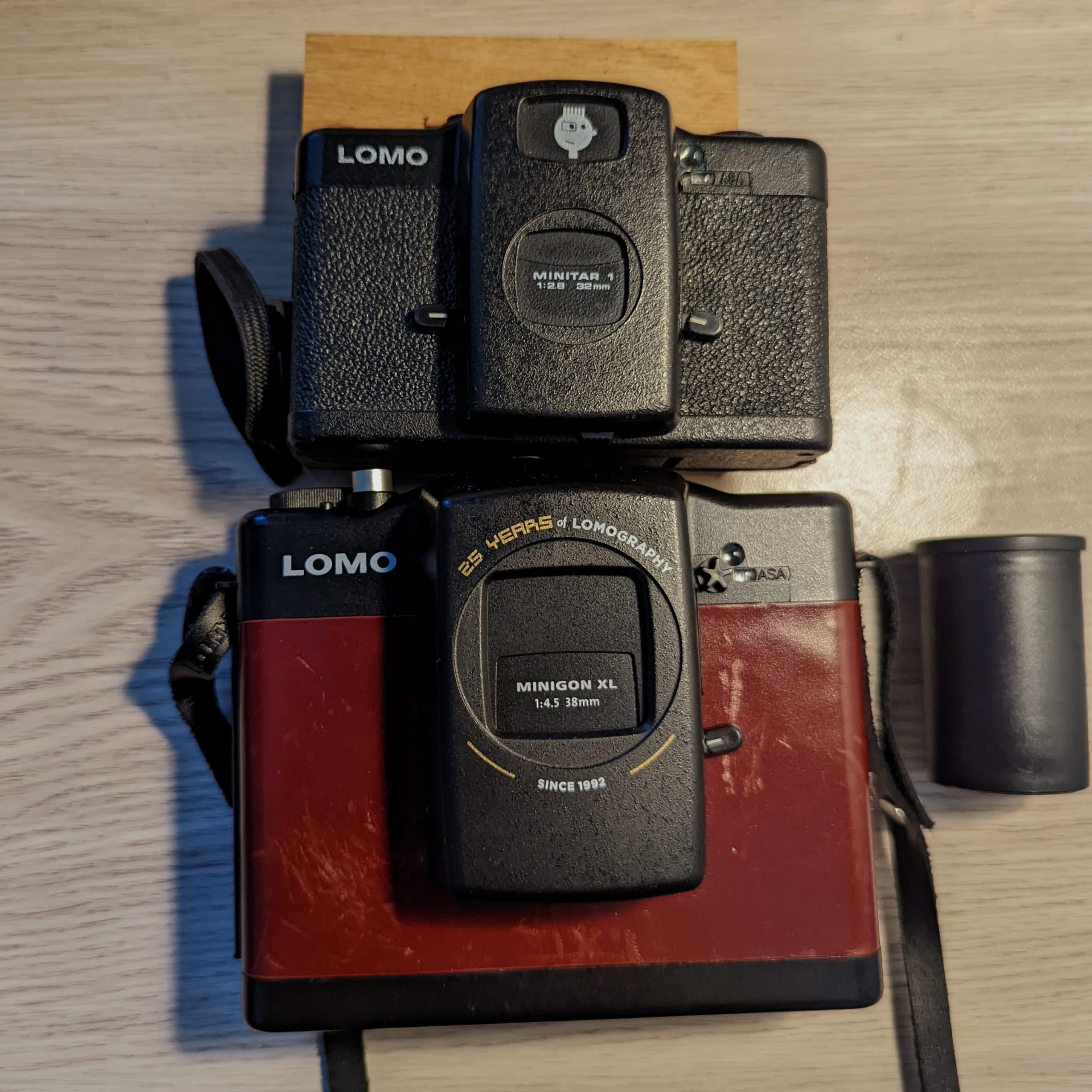
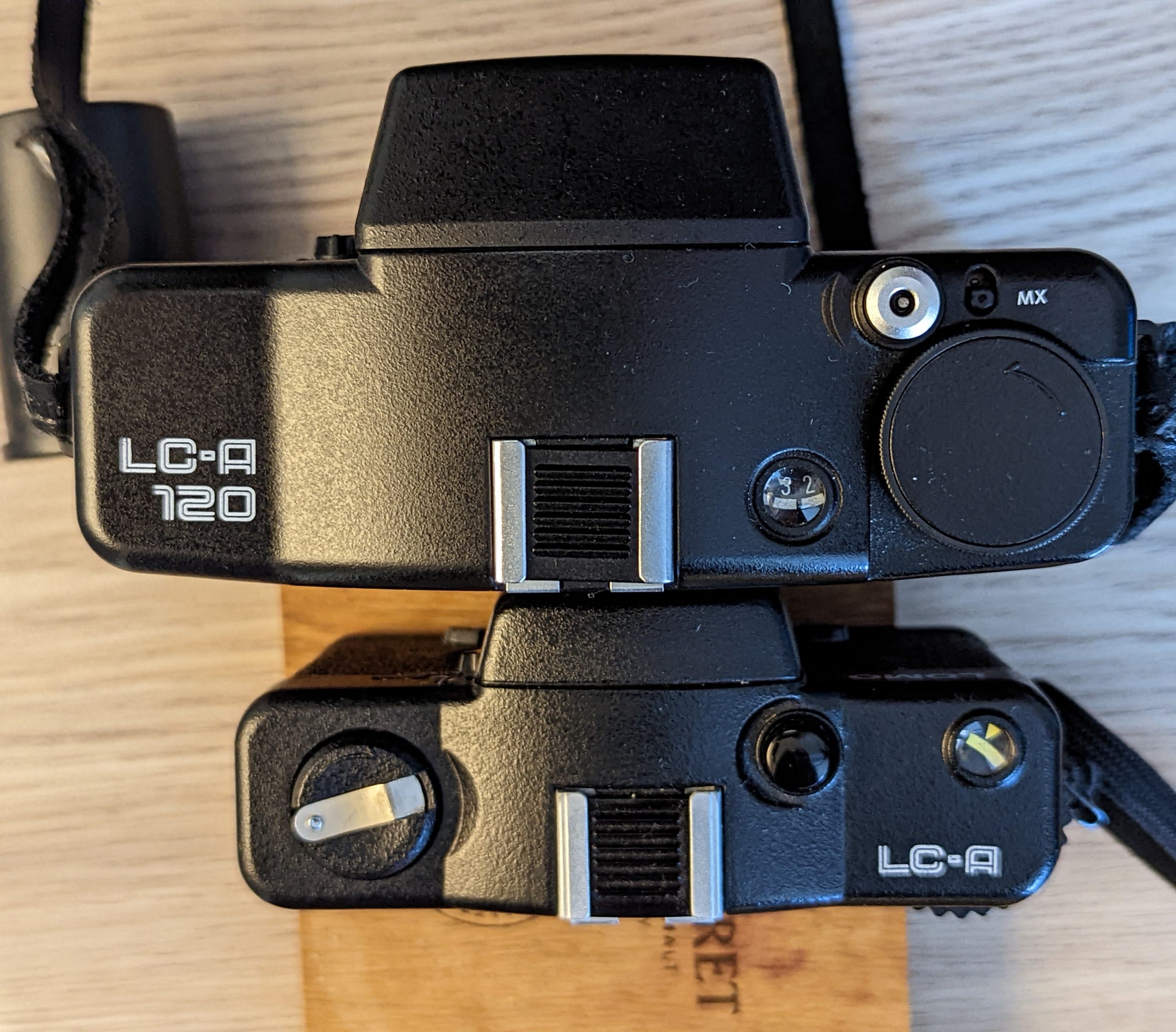
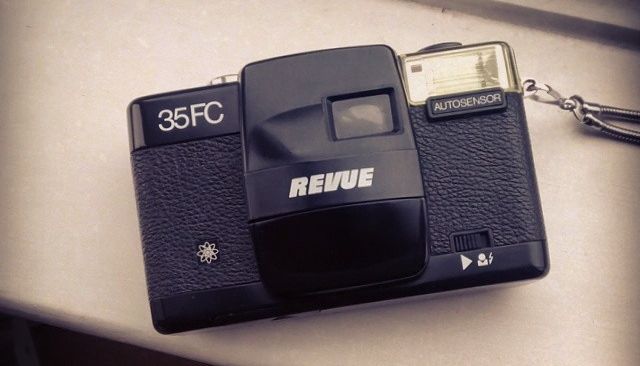
I guess that first paragraph is supposed to grab our attention..
Thank you for this post. I’ve thought about the LC-A 120 since a friend has one and likes it. It definitely is portable and I like the idea of an auto exposure 120 camera. I’ve had a Dacora Digna before, and it was fun for quick shots but limited in capability, and the shutter finally went. My Ricohflex Dia TLR is great, but not small.
I just won a USSR-era LC-A off of eBay. It’s supposed to be in working condition. I’m excited to try it out!
Alan, this is the first review I’ve seen, and had I been aware how good the lens is, I regret that I didn’t get one back then. At 38mm is has the same FoV as the Hasselblad SuperWide but without the Hasselblad price tag. The widest available to me was 55mm with my Mamiya C330, and not as portable..
The shot of the Pagoda is a magnificent advert for the camera and the other shots I’ve viewed via Flickr show how well controlled it is with contre-jour subjects. The negatives aside, that you highlight, would be something to live with given the IQ it is capable of, but rear curtain synch? What were they thinking of?